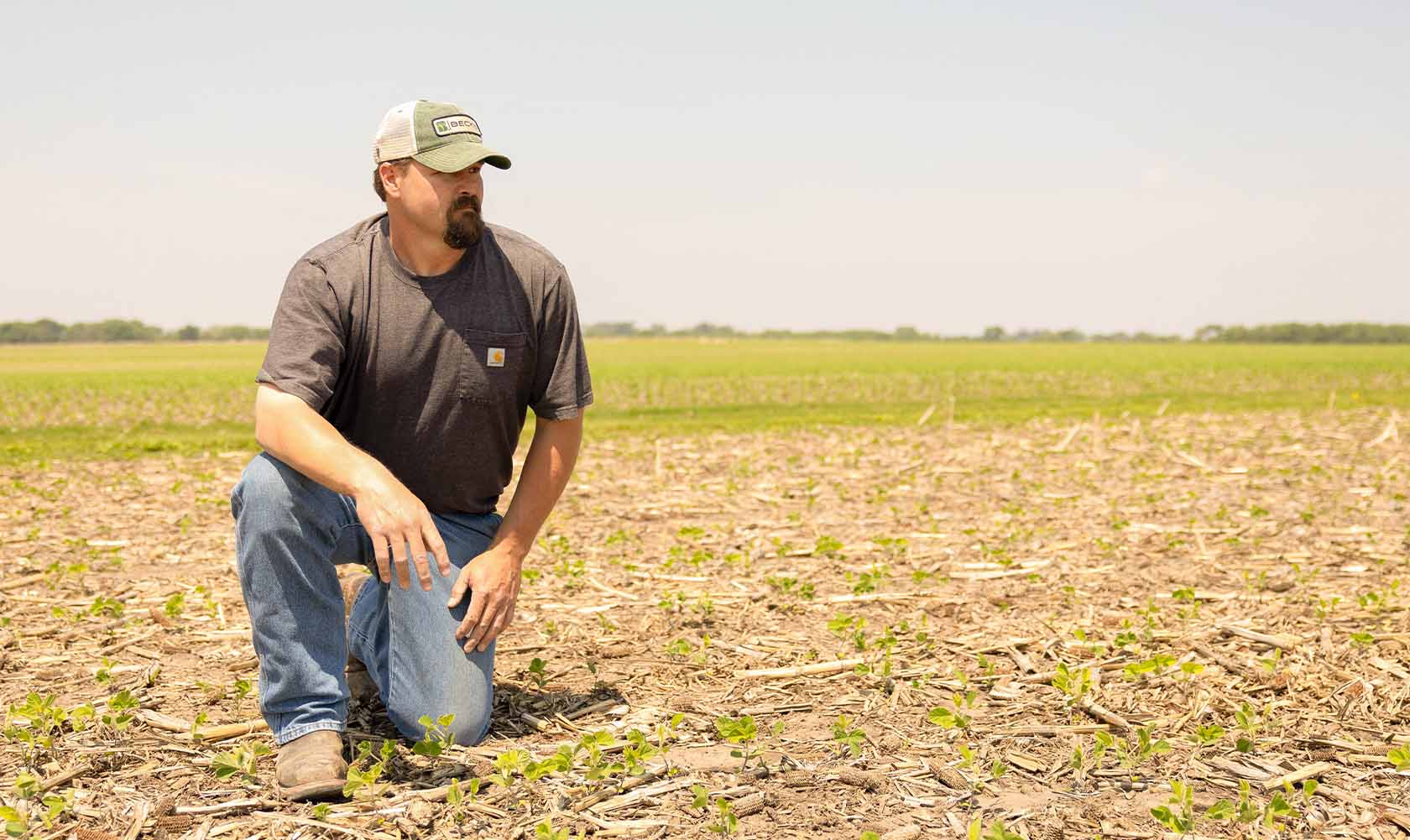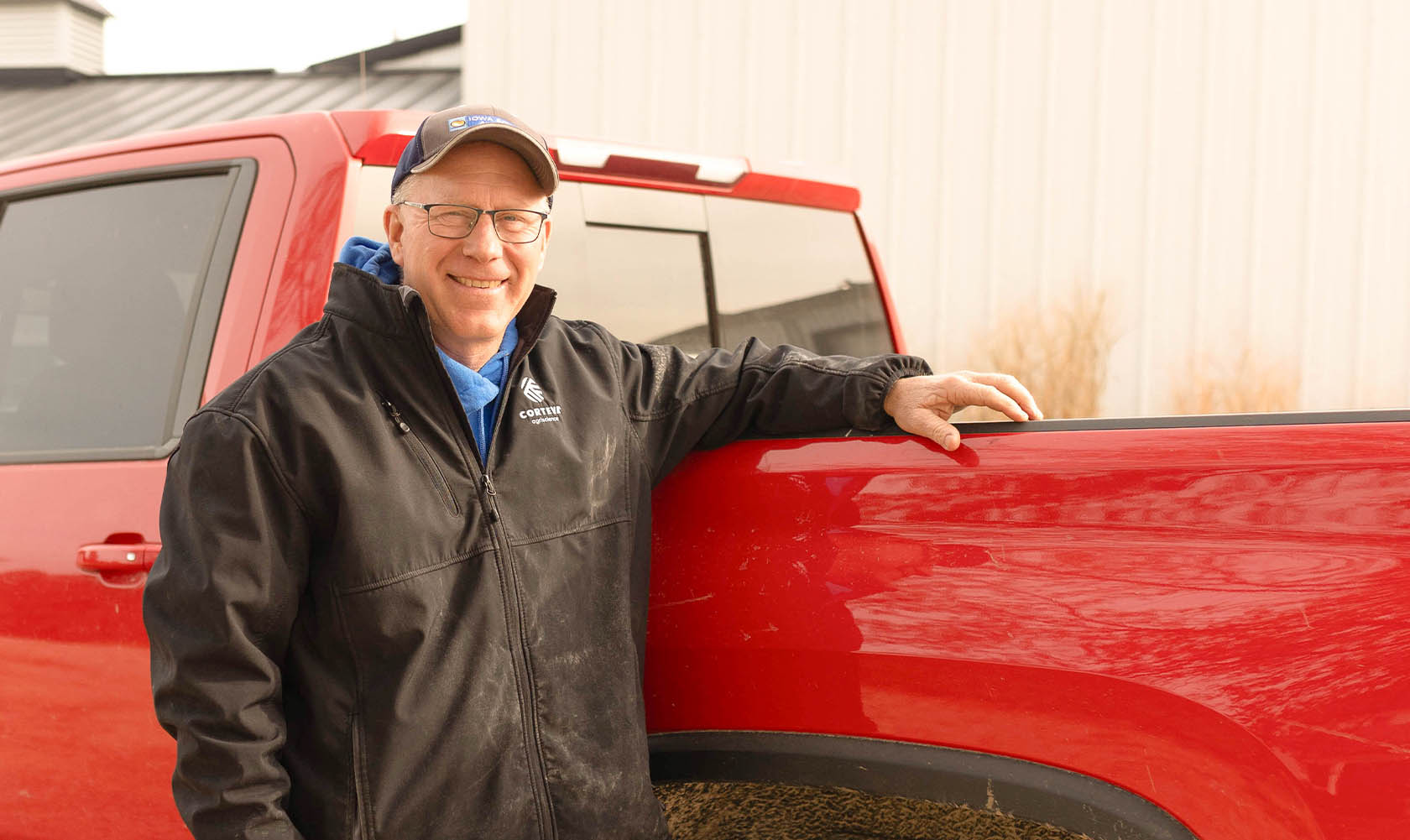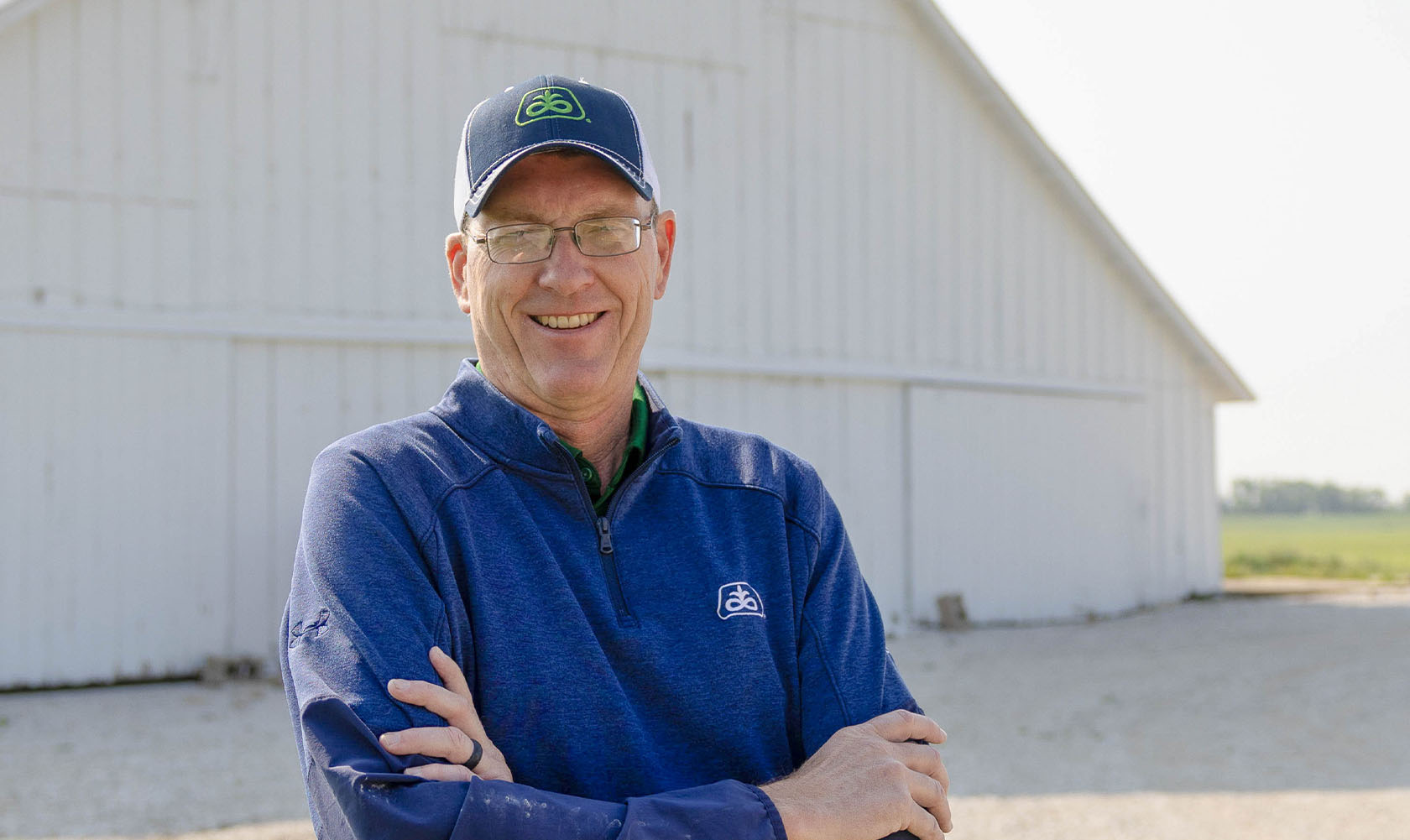
(Photo: Iowa Soybean Association / Joclyn Kuboushek)
Farmers' soybean seed wish list
July 31, 2025 | Kriss Nelson
As farming practices evolve, so do the expectations for soybean performance. From battling erratic weather and shifting weed pressures, farmers are looking ahead - and asking more of their soybeans than ever before.
Iowa Soybean Association (ISA) farmer-members and research agronomist share what they would like to see for the future of seed technology.
Mikaela Connelly - ISA research agronomist
"Examining historical soybean yields reveals that yields have improved significantly over time; however, there is still room for further improvement. As planting dates continue to be pushed earlier, farmers are up against something they can't control: the weather.
In a cool, wet spring, soybean seedings can be especially susceptible to early-season diseases, such as rhizoctonia, pythium or phytophthora. Therefore, planting resistant varieties and using effective seed treatments are key.
Research and development must continue to produce high-performing varieties and effective seed treatments; therefore, seed companies must invest in developing seed treatments that can make soybeans less susceptible to diseases.
Variety improvement is a key factor in how farmers achieve increased yields. As genetics continue to improve, selecting for plants that can resist diseases might unlock even higher yields.
Get in touch with your ISA research agronomist to investigate new or reoccurring crop challenges."
Joe Shirbroun - Farmersburg | District 3
"As soybean planting continues to move earlier each season, one of our biggest challenges is getting the seed to emerge strong in cooler, less favorable spring conditions. Seed treatments help, but a built-in trait for early vigor would be even better.
The real key is adapting soybeans to thrive in these earlier planting windows. Pioneer's research shows we've moved planting up by nearly three weeks - and in my case, it's closer to 30 days. That early start can boost yields, but only if the plant is tough enough to handle the stress. We need varieties that are stronger and more resilient in cold soils to truly win that window.

I'd also like to see improvements in seed protection, particularly with insecticide packages, and continued progress in disease resistance. For us farmers in the northeastern part of the state, white mold is still a significant issue. We need soybeans with stronger natural defenses to withstand it.
Another big opportunity lies in trait stacking. Better weed control is always a priority, and if high oleic soybeans, such as Plenish® soybeans are going to be part of our future, they'll need to include the Enlist® trait so we don't have to sacrifice weed management for specialty markets.
Finally, there's real yield potential if we can help soybeans hold their blossoms longer. I know researchers in the North Central Soybean Research Center are exploring this, and I see it as a key area to boost productivity without adding inputs."
Ron Heck - Perry | District 5
"Farmers are constantly chasing the same three things - more yield, lower input costs and greater consistency. The big question is: how do we get there?
The answer starts with releasing the yield potential that's already there with better disease and pest resistance. A good defense is important to release the genetic potential we already have.

One of the most immediate impacts we could make is by developing soybeans that grow faster, bushier or taller to shade out herbicide-resistant weeds. The goal is to develop soybeans that are aggressive and healthy, thereby reducing our herbicide bill by suppressing weeds naturally, much like cover crops do, which allows us to lower our herbicide and input costs.
By making soybeans with better defense - not susceptible to pests, diseases and even herbicides - we could take full advantage of the great soils and weather we have. We have black soils here for a reason. Varieties that are bred specifically for us give us a competitive advantage.
At the end of the day, the goal is the same for all of us: more yield, lower inputs and greater consistency."
Dustin Sage - Dunkerton | District 3
"I'd really like to see more herbicide options - and I'm not talking about recycled corn chemistry slapped onto soybeans. We need new, effective, over-the-top post-emergent products, especially for controlling tough weeds like waterhemp and pigweed. Right now, I'm basically down to just a handful of effective tools, and it's not enough.
Vigor is another big one. This year was colder and wetter, and I saw emergence issues. Some of that was on me, but a lot of it was just the weather. We need soybeans with better early-season vigor, more like what we see in corn hybrids. That kind of stress tolerance could make a big difference.

We're on the journey with cover crops and no-till practices, and focusing on weed suppression. I'm starting to think I'll need some soybean varieties that can outcompete certain cover crop species. I know emergence was a challenge this year because of the dry conditions - and there's only so much you can do about that - but I think there's room for improvement with agronomic traits that support emergence and possibly even boost yield.
I'd like to see more soybeans with traits that protect against seedling diseases - I've dealt with things like Pythium and Phytophthora early in the season, which has forced me to run more defensive varieties. Some good new ones are coming online, and I've got a few of them in the ground now that I planted in early April. But after two weeks of rain, we saw some crusting and stress. These are the conditions we're working in, and we need soybeans that can handle it.
And finally, I feel like my soybean yields have plateaued. I'm doing everything I can to push through it, but it's not like corn, where we've seen more consistent gains. There's definitely room for improvement on yield potential - and for traits that deliver a real economic return."
Alex Woodall - Pioneer field agronomist | Kamrar | District 5
"On the soybean side of things, yield is still king - it's the number one driver of product selection. But beyond yield, farmers are asking for agronomic strength to help manage the realities of their fields.
Here in north-central Iowa, iron deficiency chlorosis (IDC) is a major concern. We need varieties that can tolerate high-pH soils and handle those IDC-prone areas reliably. That trait alone can make or break a variety in this region.
We're also seeing increased awareness around soybean cyst nematode (SCN). Some farmers have been aggressive about managing it, while others are still catching up. Farmers need more SCN-resistant options, not just PI 88788 and Peking, but new sources of resistance.

White mold remains a serious challenge in parts of the state. That's why protecting soybeans through strong genetic tolerance and field management is so important - it's a foundational agronomic trait that needs to be part of any high-performing variety.
Another major shift we've seen is the earlier planting of soybeans. Over the past five years, the dynamic has completely changed. More growers are planting soybeans ahead of corn. The goal is simple: Extend the vegetative growth window to capture more light before flowering and ultimately drive higher yields. It's working, and it's been a real game changer. However, it also puts more pressure on seed companies to deliver varieties that not only yield high but also emerge well in cool soils and withstand early-season stress.
Sudden death syndrome (SDS) is another consistent concern. Farmers are relying on seed treatments, but we also need to continue pushing genetic resistance forward. Improving SDS ratings across our seed lineups is a must.
When I talk to farmers, they're very clear: Give me something that yields, but don't take away the agronomic traits I rely on.
They want protection from disease, pests and herbicide stress, along with economic traits that help them manage inputs in a tighter market.
Our current weed control systems, like Enlist®, have been a big step forward, but growers are still asking for continued innovation in herbicide trait options to stay ahead of resistance and do the best job possible at killing weeds.
In environments of subdued commodity prices, growers are doing everything they can to "bushel their way out" - maximizing every acre with earlier planting, strategic management and selecting the highest-yielding, most agronomically balanced products available.
As an agronomist, it's encouraging to see how quickly farmers are adapting - and it's our job to stay one step ahead, helping deliver genetics that not only yield but stand strong against everything nature throws at them."
Written by Kriss Nelson.
Back